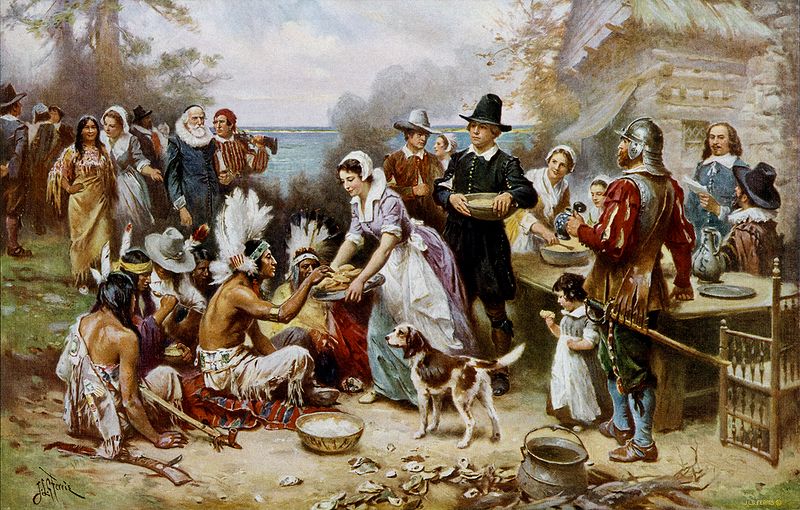Following years of persecution and hate in Holland and England, a group of 102 people left Europe in search of freedom. Following a months-long journey across the Atlantic Ocean, during which they faced storms, death, and being blown thousands of miles off course, they arrived in North America. With assistance of the Native American neighbors, they managed to prosper and bring in a bountiful harvest. In celebration of this, the Europeans held a harvest festival in which they reaped the rewards of their hard work. They were joined by the Natives in this celebration, and the celebration became known as the first Thanksgiving in 1621.
For years, Thanksgiving has been hailed as an American tradition: food, friends, family and football. Even at the first Thanksgiving, English settlers and Natives participated in shooting contests, an activity that seems undoubtedly American today.
Following decades of witch trials, epidemics, bad winters (this was Massachusetts, after all), and the occasional war with the French and/or Native Americans, the annual tradition of Thanksgiving seemed to fade away.
Prior to the Civil War, there was no set date for a day of Thanksgiving. There were of course festivals celebrating a bountiful harvest (or, in the case of 1777’s Thanksgiving, the defeat of the British army at Saratoga), but there was nothing quite like the Thanksgiving we have come to know and love today. It wasn’t until 1816 that any state declared a yearly, official day of Thanksgiving. By 1858, twenty-five of the existing thirty-six states in the Union had a set Thanksgiving holiday.
Within a few years, the American Civil War began and the United States was torn apart. In 1863, at the behest of Sarah Josepha Hale (the author of “Mary Had a Little Lamb”) who wrote several editorials arguing for the creation of a day of Thanksgiving, President Abraham Lincoln proclaimed the last Thursday of November “as a day of Thanksgiving and Praise to our beneficent Father”.
In the late-nineteenth century, Thanksgiving traditions arose all over the country and varied by region. In New England, celebrations included shooting matches in the morning, church service afterwards, and a feast in mid-afternoon. In New York City, residents would dress in fanciful masks and costumes and walk through the streets in attempts to spread joy and merriment.
The food served also varied, with crab cakes being on the menu around the Chesapeake Bay area, lobster in New England, and cornbread in the South.
In 1939, President Roosevelt changed the tradition and had Thanksgiving occur on the fourth Thursday instead of the last. Republicans abhorred this, seeing it as an afront to the legacy of President Lincoln, and declared November 30 “Republican Thanksgiving” and November 23 “Democratic Thanksgiving.” President Roosevelt’s motivation for pushing Thanksgiving back was to allow more time for shoppers to spend money Christmas items following Thanksgiving. This would inject much-needed monetary capital into the crippled American economy of the Great Depression era.
In 1941, Congress set the fourth Thursday in November as Thanksgiving permanently.
Following nearly four-hundred years of change, some things about Thanksgiving will always be the same: the bringing together of families, the giving of thanks, and gorging yourself on pumpkin pie that consists of more whipped cream than actual pie.

Leave a Reply